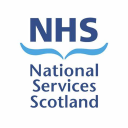To assess the ability of the testes to secrete testosterone.
To investigate causes of testicular disorders:
- suspected anorchia
- anatomical or developmental defects of the testes
- enzyme defects of the testes
- following torsion.
test announcement

(From the Scottish DSD Network)
In the normal male child HCG increases testicular secretion of testosterone. This test examines the capacity of Leydig cells to respond to HCG and secrete testosterone. See figure 1 below to calculate an external masculinisation score. More detailed guidance on specific investigations required can be found on the Scottish Differences of Sex Development website.
For investigation of gonadal function, the standard hCG stimulation test performed over one week is sufficient in many cases, but some cases may require prolonged hCG stimulation. The prolonged hCG stimulation test may be a useful means of investigating the endocrine gonadal axis after infancy when the testes are nascent. The test may also aid the descent of the undescended testes which are not completely impalpable.
The timing of the tests is important, and the results may be influenced by age and the test may influence surgical and medical management.
If both gonads have never been palpable or detected, a karyotype should be sought before embarking on the hCG test, particularly in the apparent boy with premature virilization.
Figure1:

Human Chorionic Gonadotrophin (hCG) 1500 units.
Intramuscularly.
After baseline bloods taken.
| Week1 | Week 2 | Week 3 | Week 4 | >Week 8 | ||||||
| Monday | Tuesday | Wednesday | Thursday | Monday | Thursday | Monday | Thursday | Monday | ||
| Examine: | ||||||||||
| Stretched penile length | ||||||||||
| Testes location | ||||||||||
| Clinic review | ||||||||||
| Administer: | ||||||||||
| hCG 1500iu, i.m. | ||||||||||
| Measure: | ||||||||||
| Karyotype 3 | ||||||||||
| DNA 3 | ||||||||||
| AMH 3 | ||||||||||
| Urine steroid profile 3 | ||||||||||
| Androstenedione 2 | ||||||||||
| DHT 2 | ||||||||||
| DHEAS 2 | ||||||||||
| Testosterone 1 | ||||||||||
| SHBG 1 | ||||||||||
A short hCG test is usually done on day 1 and day 4. Samples can also be taken on day 5 in addition, if there are any issues with the day 4 sample.
1 Serum for Testosterone is very important; SHBG is much less important, particularly in infants.
2 These androgens are listed in order of priority with Androstenedione being most important.
3 These samples should preferably be collected on the first day but can be collected on any visit
Clinical assessment for stretched penile length and testes location may have been carried out prior to hCG test referral and therefore not required on day 1.
All children with a DSD should have an ultrasound scan of the renal tracts.
Interpretation of the results can be difficult.
The results should be discussed with a paediatric endocrinologist.
Arrange endocrine clinic follow-up for 6 weeks after the completion of investigations.
Some children with a poor testosterone response to hCG may require further assessment of adrenal function.